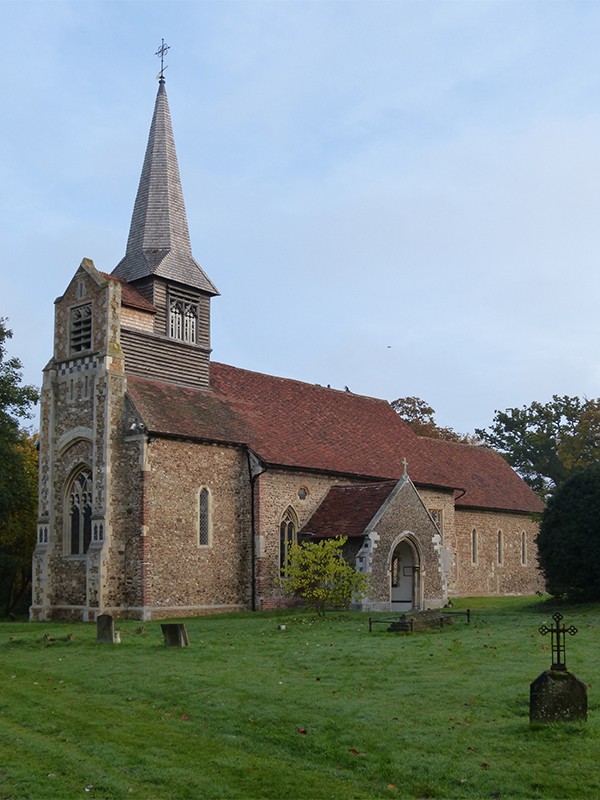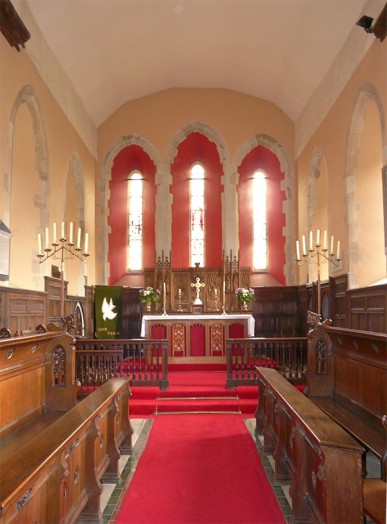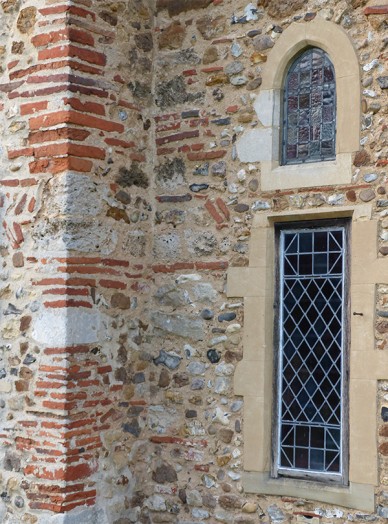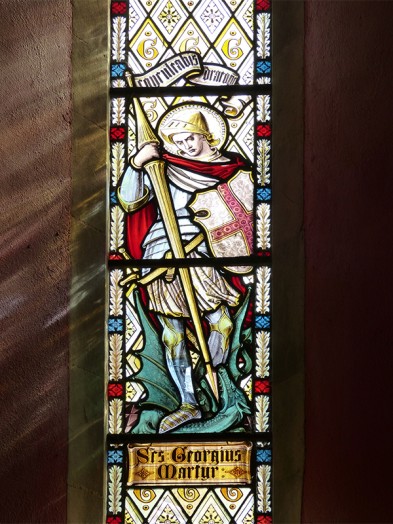
All Saints Great Braxted, Essex
repairs to shingled spire & belfry
All Saints Church at Great Braxted has been celebrating the completion of major repairs to its shingled spire and belfry, funded by grants from the Friends of Essex Churches Trust and the Heritage Lottery Fund, as well as local fundraising. The parish have also been celebrating the 900th anniversary of the church itself.
All Saints is singled out by the Essex Field Club as being ‘one of the best churches in Essex for the variety of natural stones in its external fabric’. This is the result of Essex having no good supply of building stone, and having to make the best of the materials available, all held together with generous quantities of lime mortar. The walls were originally covered with a thin layer of plaster, to protect the fragile surface from the weather.
The church as first built in about 1115 consisted of a nave, the same size as it is now, and a chancel with an apsidal east end (comparable to Little Braxted). There was a small round arch in the wall separating the nave from the chancel, and the few windows were narrow and high up in the walls. The roof was covered with oak shingles.
About a hundred years later the chancel was more than doubled in length.
At the same time the west tower was built. The masonry walls only reach to the height of the nave, and it was presumably meant to go higher; above that was a timber belfry and spire.
There is an interesting comparison that can be made between the quoins (corners) of the 12th-century nave and the 13th-century chancel and tower. The older quoins are built using Roman bricks and tiles, a very common feature of Essex churches; the material was readily available, and provided the strength needed for corners that could not be provided by the rubble of which the rest of the walls were built. Also as part of the 13th-century changes the roof shingles were replaced with tiles; some of these (larger than modern ones) can still be seen on the north side of the nave.
Many changes would have taken place to the interior of the church at the Reformation, although we can only speculate what these might have been. However, no significant changes to the actual structure took place until
1761–2, when the Du Cane Pew was added to the north side of the nave. Peter Du Cane had bought Braxted Lodge (as it then was) in 1751 and wished to provide somewhere comfortable for his family to sit. The fine north window, with stained glass by William Warrington, was installed in 1844; it shows nine scenes from the life of Christ, from the Nativity to the Resurrection.
The vestry was extended in 2004–6 by David Whymark, to provide lavatories and a small kitchen.
The recent work to the church is quickly blending in, and there will soon be little visible evidence of it, but it will help to keep the building standing for another 900 years.
Unfortunately All Saints is not normally open. For more information (including location map), see http://www.tk-tiptree-braxted benefice.org.uk/braxtedhome.html.



